Edamame is edible young soybeans that are full of nutrients. Enjoy the soybeans in the pods as a snack or the shelled soybeans in many dishes!
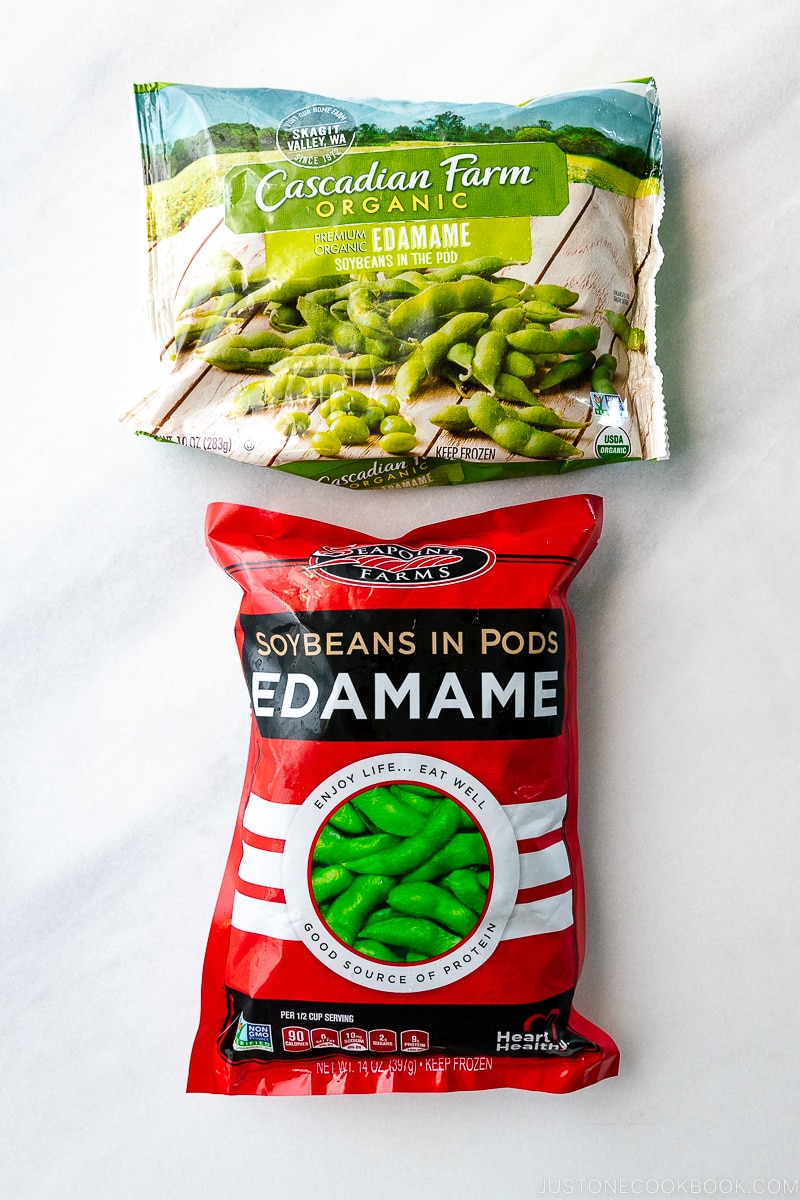
Edamame (枝豆) are edible young soybeans that are picked before ripening. Eda (枝) means ‘stems,’ and mame 豆 means ‘beans,’ as traditionally, they are often sold in pods with the stems attached. In Japan, edamame is served as a snack or an appetizer in Japanese restaurants.
Table of contents
What Is Edamame
Edamame are young soybeans. They make delicious snacks, are full of vitamins and minerals, and are a great soy protein source. The same soybeans make tofu, soy milk, soy sauce, natto, tempeh, and other soy products. Compared to mature soybeans, which are pale yellow, edamame are bright green.
It reaches peak season in the summer, and it’s also available frozen year-round. You may find it sold in bunches still attached to the stem.
What Does It Taste Like
It tastes nutty, buttery, and sweet.
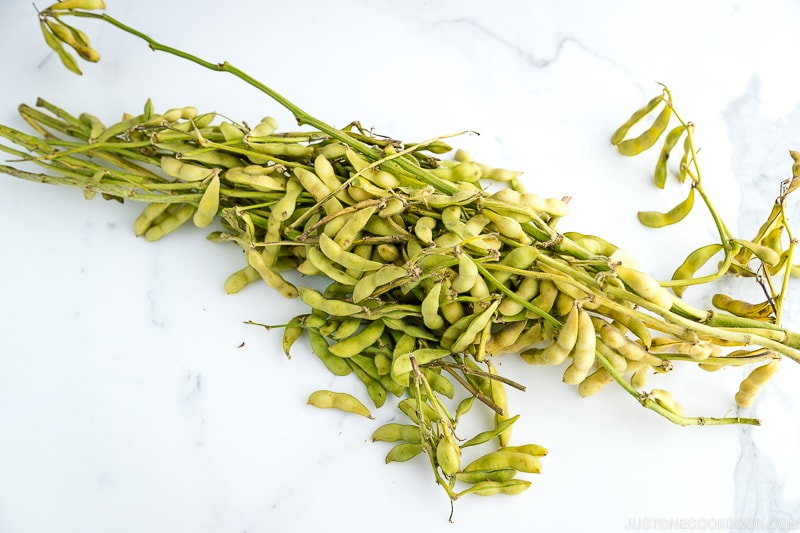
How to Cook
If you can find it fresh, cooking it at home is easy. The traditional Japanese method is to boil fresh, whole beans in a pot with 4% salt water until tender. You can also steam the beans. Drain well before serving and enjoy warm, cold, or room temperature.
I have a detailed recipe for cooking fresh and frozen edamame using the Japanese method.
For frozen edamame, do not follow the instructions provided in the package. I have shared the 3 reasons why you shouldn’t follow the package instructions in the post.
How to Microwave
Place precooked frozen beans in a bowl and add half a teaspoon of water—cover and microwave on high for three minutes.
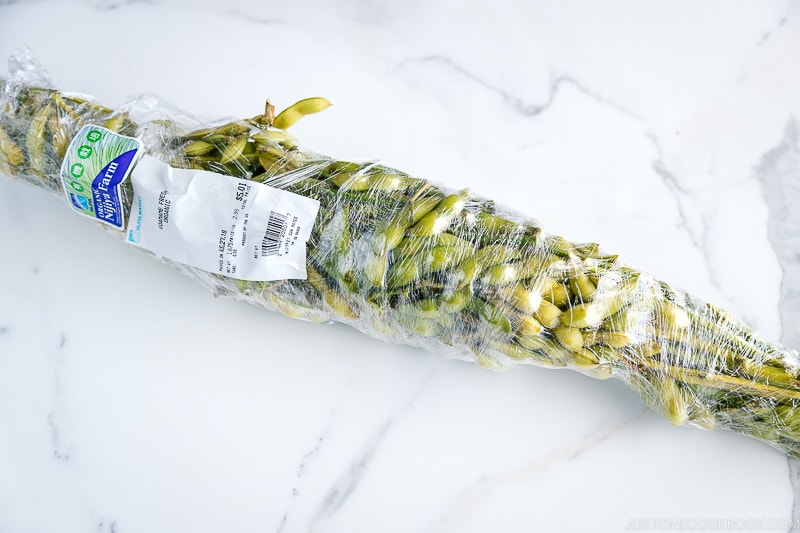
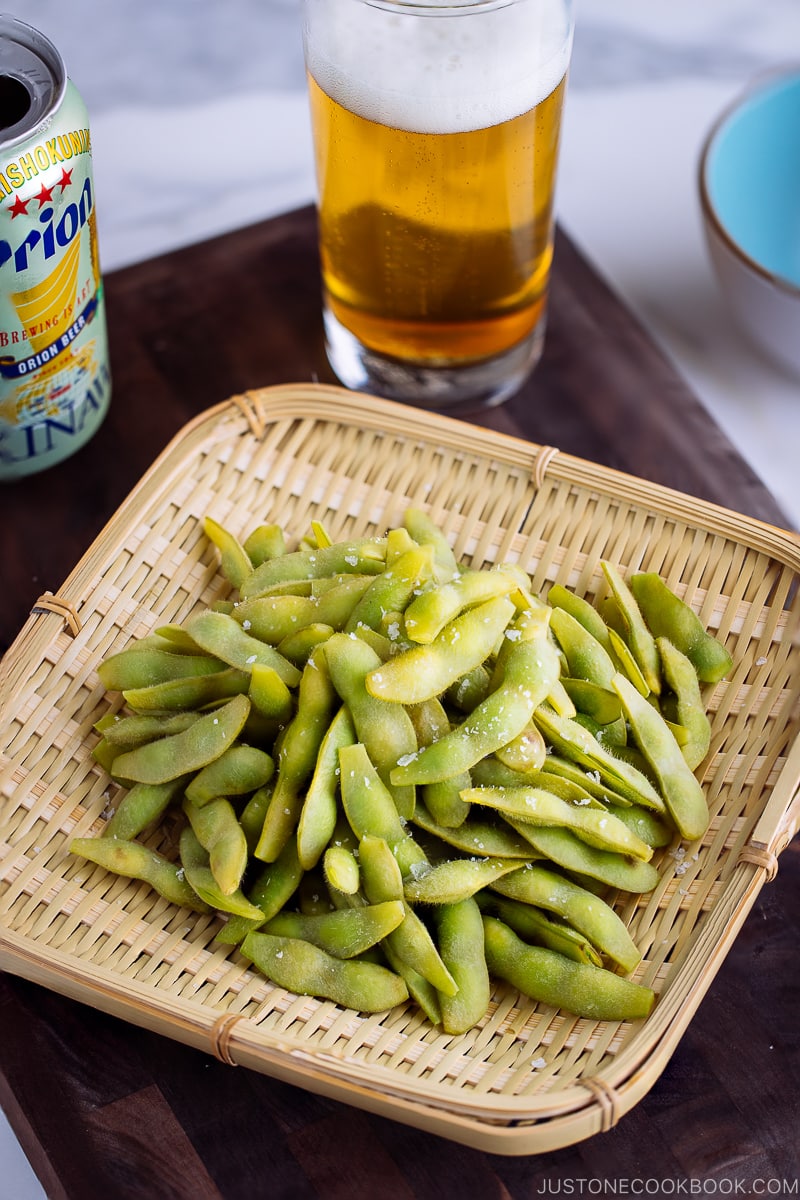
Edamame Recipes
I love serving edamame in pods as an appetizer, but I also use shelled edamame in many Japanese dishes. The mild, sweet, and buttery taste pairs well with many dishes. Add it in soups, hot pots, noodle dishes, bento lunch boxes, or sprinkle a handful in salads and stir-fries!
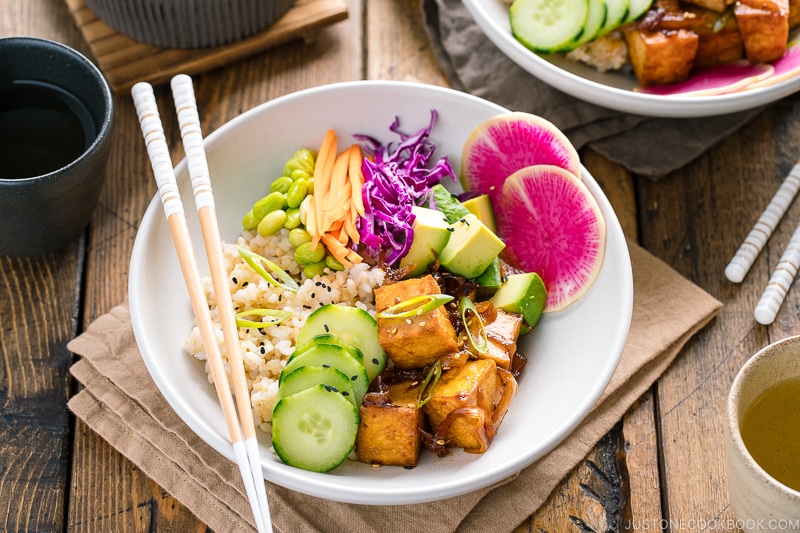
- DIY Rice Bowls with Edamame
- Vegetarian Ramen with Edamame
- Poke Bowl with a side of Edamame
- Soba Noodle Salad
- Creamy Miso Pasta with Tofu, Asparagus, and Edamame
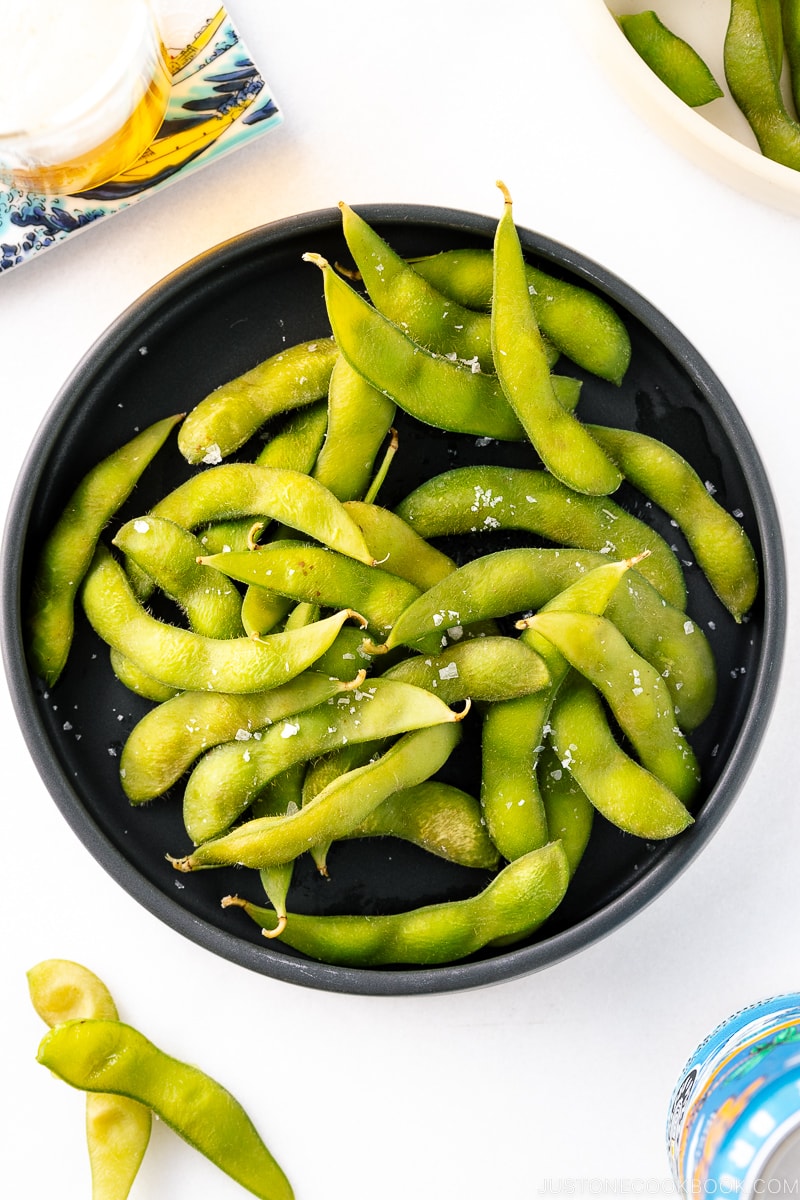
Where to Buy
You can find it sold in the freezer aisle at most grocery stores in the U.S. They are also available shelled, fresh, or frozen.
Between June and September, I can find fresh edamame pods in stalks at my local Japanese grocery stores. The freshly cooked beans are a treat!
Otherwise, I often stock up on the frozen pods or shelled ones as they are frozen shortly after being picked to preserve the freshness. Check the label when buying it frozen. It may be imported from Asia or grown in the United States. If you have options, organic is best. Check that there are no additives; it should be just the beans and maybe salt. I suggest avoiding precooked edamame as it can be high in sodium content.
You might find fried or dried shelled edamame called mukimame (むき豆, literally “shelled beans”) in the snack aisle at Asian or Japanese supermarkets, which are delicious and addicting.
Health Benefits
There are a lot of health benefits. It’s rich in fiber, calcium, isoflavones, and folate and contains significant amounts of vitamin C, vitamin K, Thiamin, manganese and copper. Observational studies suggest it can lower cholesterol levels and reduce the risk of breast cancer and menopausal symptoms, such as hot flashes and mood swings.
It’s also one of the few plant-based foods with complete protein, containing all nine essential amino acids that the body cannot produce alone. It’s an excellent choice of protein for vegetarians, vegans, or anyone who wants to eat more plant-based food.
For those on a keto diet, it’s also low in carbohydrates and calories. 1/2 cup of a serving packs a lot of fiber, protein, and other mineral content needed for our bodies.
Wish to learn more about Japanese cooking? Sign up for our free newsletter to receive cooking tips & recipe updates! And stay in touch with me on Facebook, Pinterest, YouTube, and Instagram.










[…] sweet dishes, you can eat it with anko, kinako, black sesame seeds, and pounded sweetened edamame. It’s also use it to make Mochi Ice Cream, Zenzai (Oshiruko), and Strawberry […]